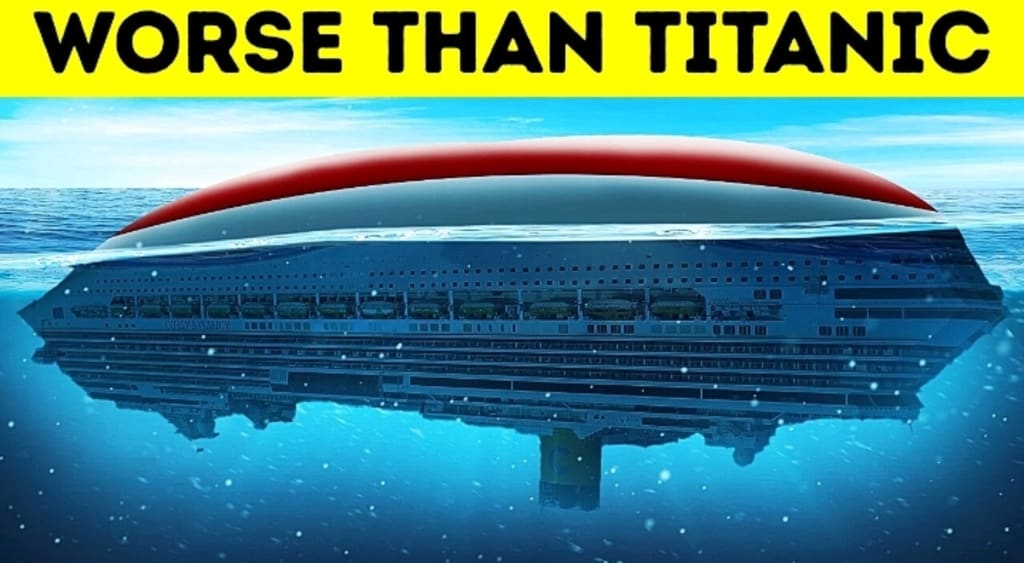No one talks about the Shipwreck more tragic than the Titanic
Unveiling the Layers of Maritime Tragedies: From Titanic to Sultana

The global notoriety surrounding the Titanic disaster stems from several pivotal factors, with technological progress serving as a primary catalyst. Revered as a pinnacle of maritime innovation, the Titanic boasted opulent amenities and cutting-edge engineering, thrusting it into the forefront of technological achievements in its era. This acclaim significantly contributed to the widespread fascination and admiration surrounding the vessel.
Another crucial element that thrust the Titanic into the spotlight was its extensively publicized and widely believed "unsinkable" reputation. The perception of invincibility, coupled with the tragic sinking on its maiden voyage, sent shockwaves of disbelief around the globe. The stark contrast between the perceived indestructibility of the Titanic and the harsh reality of its demise played a crucial role in the lasting impact of the disaster on public consciousness.
Media coverage played a vital role in solidifying the Titanic's place in history. The widespread dissemination of the tragic tale through newspapers, radio broadcasts, and later, films, ensured that the narrative reached audiences far and wide. The emotive storytelling and vivid imagery associated with the sinking further heightened its resonance, establishing the Titanic as a symbol of both human achievement and the unpredictability of nature.
In the shadow of the Titanic's fame, it is crucial to recognize other maritime tragedies that, despite their lower profile, inflicted even greater devastation. The Sultana Steamboat disaster of April 27, 1865, serves as a poignant example. The Sultana, a substantial wooden vessel, tragically found itself overloaded with more than 2,000 passengers, illustrating the dire consequences of neglecting safety protocols and the dangers of overcrowding in maritime transportation.
The circumstances surrounding the Sultana disaster highlight the necessity of rigorous safety measures in the maritime industry. While the Titanic remains a dominant historical narrative, events like the Sultana catastrophe underscore the broader story of maritime tragedies, each carrying its own lessons and reflections on the human condition.
In essence, the fame of the Titanic is interwoven with a broader narrative encompassing various maritime disasters. Whether widely celebrated or relatively obscure, each event stands as a testament to the delicate balance between human innovation, the forces of nature, and the consequences of negligence. Reflecting on these calamities is not only about memorializing those who perished but also drawing lessons that guide our commitment to ensuring human safety at sea.
The collective memory of these maritime tragedies serves as a humbling reminder of the fragility of life, the potential for human error, and the ongoing pursuit of enhanced safety standards. By acknowledging the intricacies of each event, we gain a more comprehensive understanding of the complexities and challenges inherent in maritime transportation and the responsibilities associated with pushing the boundaries of technological advancement.
Maritime disasters like the Titanic and Sultana tragedies have deeply influenced our perception of oceanic travel. The Titanic, with its luxurious amenities and advanced technology, captured the imagination of people worldwide but ultimately met a tragic end. The belief in its unsinkable nature shattered when it sank on its maiden voyage, leaving an indelible mark on history. Media coverage further immortalized the Titanic, ensuring its place in collective memory.
However, amidst the Titanic's fame, it's vital not to overlook other maritime disasters, such as the Sultana Steamboat tragedy. Despite being lesser-known, the Sultana disaster claimed more lives due to negligence and overcrowding, emphasizing the importance of strict safety protocols in maritime operations. These disasters, though separated by decades, share common themes of human error, technological hubris, and the unpredictable forces of nature.
The contrast between the opulence of the Titanic and the tragedy of its sinking serves as a poignant reminder of the delicate balance between human achievement and vulnerability. While technological advancements have revolutionized maritime travel, they also underscore the need for caution and preparedness. The lessons from these disasters extend beyond memorializing the lives lost; they compel us to prioritize safety and vigilance in all maritime endeavors.
In conclusion, the Titanic's legacy extends beyond its fame as a luxury liner to become a symbol of human ambition and folly. Its story intertwines with that of other maritime disasters, each offering lessons on the perils and possibilities of oceanic travel. By understanding the complexities of these events, we honor the memory of those lost and strive to create a safer future for maritime exploration.






Comments
There are no comments for this story
Be the first to respond and start the conversation.